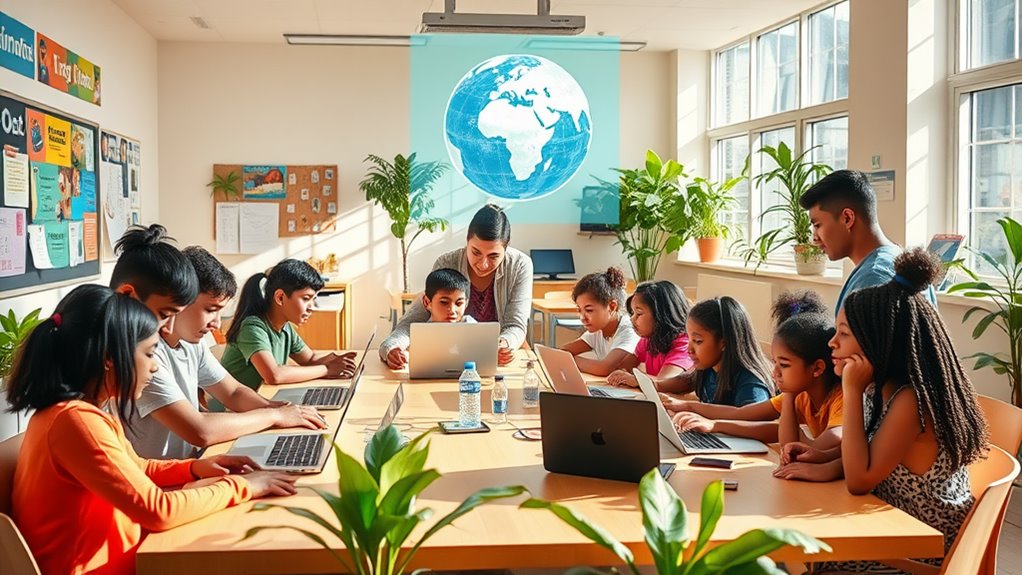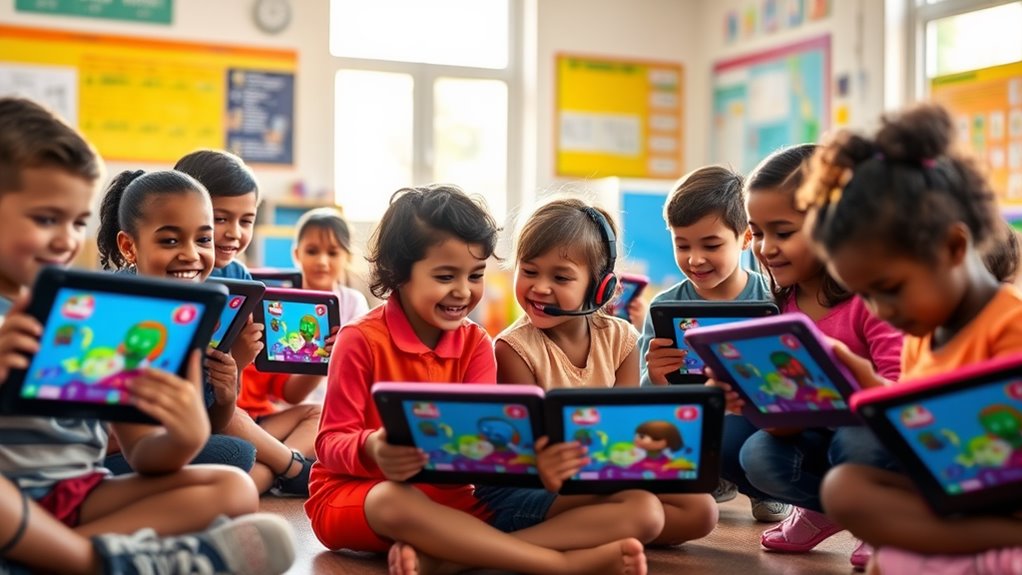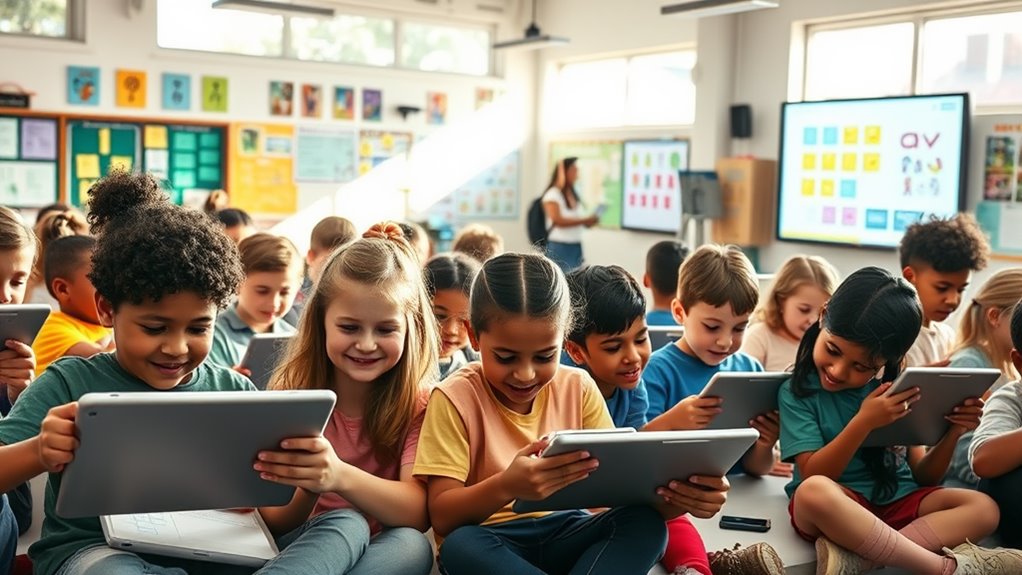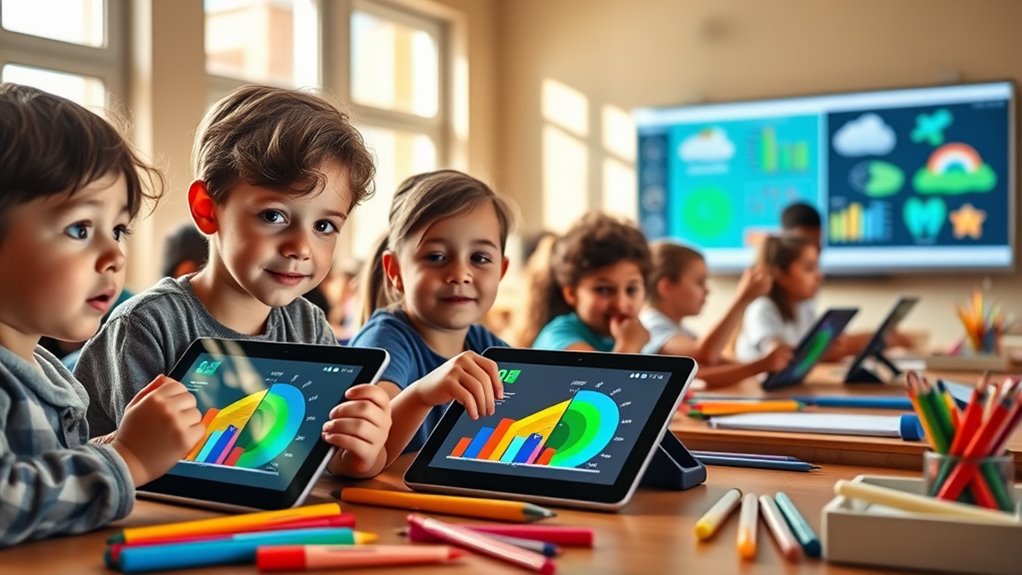Why Digital Classrooms Are the Future of Education!
Digital classrooms are the future of education because they offer flexible, accessible learning opportunities tailored to your unique needs. You can engage with interactive tools that enhance collaboration, allowing you to connect with peers no matter where you are. These innovative environments support diverse learning styles, making lessons more dynamic and enjoyable. Plus, personalized experiences empower you to take charge of your educational journey, tracking progress along the way. With emerging technologies like virtual reality and AI, the possibilities are endless. Stick around, and you’ll discover more about how these advancements shape the learning landscape.
Transformative Technology in Education
In recent years, technology has frequently transformed how we approach education, making learning more accessible and engaging. You’ve likely noticed the shift toward digital classrooms, which utilize tools like interactive whiteboards, online resources, and virtual collaboration platforms. These innovations don’t just change the way information is presented; they actively engage you in the learning process.
With transformative technology, you can explore subjects in depth through multimedia resources that cater to different learning styles. Whether you prefer videos, podcasts, or interactive simulations, there’s something for everyone. You’re no longer a passive recipient of information; instead, you’re an active participant. This engagement enhances your understanding and retention of material.
Additionally, technology fosters collaboration among students, allowing you to work together seamlessly, regardless of physical location. You can share ideas in real time and learn from your peers, enriching your educational experience.
As you navigate this digital landscape, you’ll find that the possibilities are endless. The integration of technology in education isn’t just a trend; it’s redefining how you learn, interact, and grow, paving the way for a more dynamic and personalized educational journey.
Enhanced Accessibility for All Learners
The shift toward digital classrooms not only enhances engagement but also significantly improves accessibility for all learners. With technology at your fingertips, you can access materials tailored to your needs, breaking down barriers that traditional classrooms often face. Whether you’re a student with disabilities or someone who learns best at your own pace, digital classrooms empower you to take charge of your education.
Here’s a quick look at some key benefits of enhanced accessibility:
| Benefit | Description |
|---|---|
| Flexible Learning | You can learn anytime, anywhere, fitting education into your schedule. |
| Diverse Resources | Access a variety of materials, from videos to interactive simulations. |
| Assistive Technologies | Use tools like screen readers and speech-to-text software that cater to individual needs. |
| Collaborative Tools | Engage with peers through forums and group projects, regardless of physical location. |
In this digital age, accessibility isn’t just a perk; it’s a right. Embracing these advancements ensures that every learner, regardless of their circumstances, has the opportunity to thrive. Digital classrooms truly pave the way for a more inclusive educational environment.
Personalized Learning Experiences
Personalized learning experiences transform how you engage with education by tailoring content to fit your unique needs and preferences. In a digital classroom, you can learn at your own pace and focus on areas that interest you the most. Instead of being confined to a one-size-fits-all approach, you’ll find resources and materials that resonate with your learning style.
With adaptive technology, the lessons can adjust based on your performance. If you grasp a concept quickly, you can move on to more challenging material, while still having support available for topics you find difficult. This flexibility empowers you to take charge of your learning journey.
You also have access to a wide range of multimedia resources, from videos and interactive simulations to quizzes and forums. This variety keeps your learning dynamic and engaging. Plus, you can set personal goals and track your progress, giving you a sense of achievement and motivation.
Engagement and Collaboration Tools
Engagement and collaboration tools are transforming how students connect and interact within digital classrooms. These tools foster a sense of community, making learning more dynamic and interactive. You’ll find that using these technologies not only enhances your learning experience but also encourages teamwork and creativity.
Here are four essential engagement and collaboration tools that can elevate your digital classroom experience:
-
Discussion Forums: These allow you to share ideas, ask questions, and engage in meaningful conversations with your peers and instructors.
-
Collaborative Document Editors: Platforms like Google Docs enable you to work simultaneously with classmates on projects, enhancing your teamwork skills.
-
Video Conferencing Tools: Tools like Zoom or Microsoft Teams facilitate real-time communication, allowing you to collaborate effectively, regardless of location.
-
Interactive Whiteboards: These digital boards let you brainstorm ideas and visualize concepts together, making lessons more engaging and memorable.
Future Trends in Digital Classrooms
As technology continues to evolve, so does the landscape of digital classrooms. You’ll notice that artificial intelligence is becoming more integrated into educational platforms, personalizing learning experiences based on your unique needs and pace. Imagine AI-driven tutors available 24/7, providing instant feedback on your assignments and helping you grasp complex concepts.
Virtual and augmented reality are also on the rise, allowing you to immerse yourself in interactive learning environments. Picture exploring ancient civilizations or conducting virtual science experiments right from your home. This hands-on approach fosters deeper understanding and retention.
Moreover, the shift towards hybrid learning models is gaining momentum. You’ll likely find classrooms blending in-person and online experiences, giving you flexibility in how you access education. Increased focus on data analytics will further enhance this trend, allowing educators to track your progress and adapt lesson plans accordingly.
Finally, expect growth in social-emotional learning tools that promote well-being and resilience. These innovations are designed to nurture not just your academic skills but also your emotional intelligence. In essence, the future of digital classrooms is bright, promising a more engaging, personalized, and holistic learning experience for you.
Frequently Asked Questions
How Do Digital Classrooms Impact Traditional Teaching Methods?
Digital classrooms enhance traditional teaching by integrating technology, fostering collaboration, and providing personalized learning experiences. You’ll find that they promote engagement and accessibility, making education more dynamic and adaptable to various learning styles and needs.
What Are the Costs Associated With Implementing Digital Classrooms?
Implementing digital classrooms involves costs like technology purchases, software licenses, training for educators, and ongoing maintenance. You’ll need to budget for these expenses to ensure a seamless transition and effective learning environment for students.
Are There Any Drawbacks to Digital Classrooms?
Yes, there are drawbacks to digital classrooms. You might face issues like technology dependence, distractions from various devices, limited social interaction, and potential inequities in access, which can impact learning experiences for some students.
How Do Teachers Adapt to Digital Classroom Environments?
Teachers adapt to digital classroom environments by embracing technology, enhancing their skills through training, and incorporating interactive tools. They create engaging lessons that foster collaboration, ensuring students remain motivated and connected even in virtual settings.
What Skills Do Students Need for Success in Digital Classrooms?
To succeed in digital classrooms, you need strong self-discipline, effective communication skills, and adaptability. You should also grasp technology quickly, collaborate with peers online, and manage your time wisely to excel in this environment.





